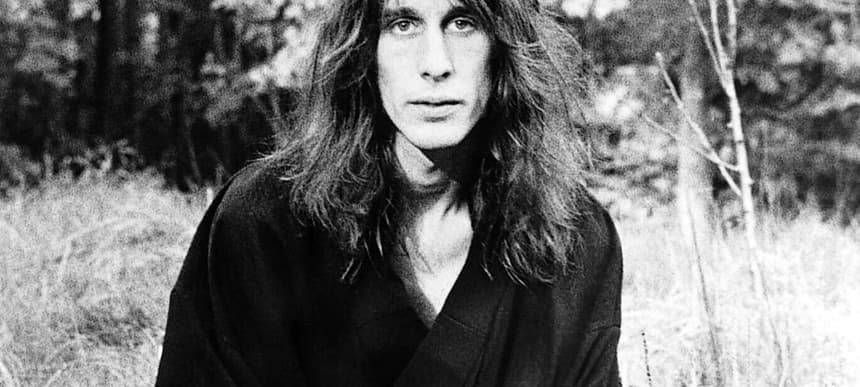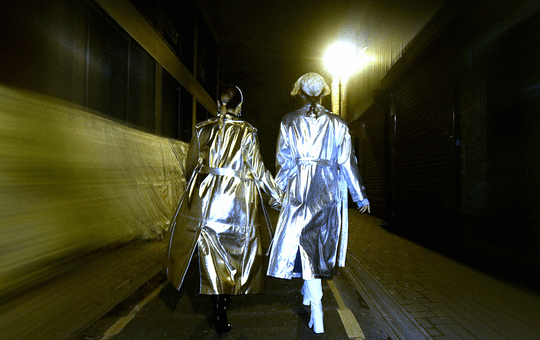
The Dummy guide to Todd Rundgren
Still probably unbeknownst to many out there, earlier this year, Hans-Peter Lindstrom and Emil Nikolaisen (of Sereena Maneesh) released a collaboration album with none other than the American prog-rock icon and songwriting and recording engineer legend Todd Rundgren. The result, titled ‘Runddans,’ was nothing if not at the very least vintage Rundgren: playfully straddling the line between experimental (or progressive) and pop as stubbornly yet wistfully, as now expected of every one of his releases since the '70s.
Now into his 60s and still going strong (along with ‘Runddans,’ he released a new solo album titled ‘Global’), Rundgren is perhaps not as immediately recognizable in name as other seminal American songwriters – more so to an older crowd or serious music aficionados – but he has maintained an impressively devoted following for most of his career. Known for being an immensely important and prolific psych rock-turned-prog rock songwriter in the studio; he eventually also made his name engineering and producing other notable acts, albums, and singles, and later delving headfirst deep into other and new music genres that developed in his lifetime including r&b, hip-hop, rap and most notably for us, techno, plus other genres of electronic music, for which he has since also maintained quite an interest in. In the live sphere, Rundgren has also rivaled the likes of David Bowie and Pink Floyd with his elaborate performances which have richly mined both theater and performance art.
Comparing him to others is an exercise in futility because there’s no one else like him, and there probably never will be. It’s for all of these reasons and more that Todd Rundgren’s work makes for essential listening for any self-proclaimed serious music fan. What follows isn’t meant to be definitive or comprehensive, but rather a brief beginner’s guide to the music of Todd Rundgren, focusing mainly on his solo career, at the expense of his also well-known work with Nazz, Utopia, and his extensive career as an engineer and producer of a wide variety of other notable acts and releases.
‘Something/Anything?’ may well be Rundgren’s finest work, especially in terms of thematic and musical cohesiveness. I Saw The Light rightfully belongs within the pantheon of all-time great American pop songs; it’s one of those songs everyone’s heard at some point in their lives, most likely at a diner, some discount store in middle America, or switching through the quintessential classic rock station when driving. It’s become one of those fixtures in the experience of contemporary everyday American life.
‘A Wizard, a True Star’ was Rundgren’s follow-up to his most commercially and (still) critically successful album, 1972’s ‘Something/Anything?'. It found him firing on all cylinders in moving decisively away from traditional/pop songwriting towards weird, wacky, bizarro psych and prog-rock directions. Arguably, it either represents a sort of start-over that foreshadowed the crazy experimentalism to come, as well as one of his more cohesive and genuinely original '70s-era experimental releases.
Rundgren’s work with Utopia makes up one of the most significant periods of his career as a songwriter and musician. There’s nowhere better to start with Utopia than with their first album, 1974’s ‘Todd Rundgren’s Utopia.’ Although the band’s sound would undergo changes from album to album, this is the one that started it all…
1975’s ‘Initiation’ is arguably Todd Rundgren’s underappreciated art rock masterpiece, much more focused – and ‘digestable’ – than yet still as weird and playful as ‘Wizard.’ It’s no surprise the album was preceded and followed by still other great work by Rundgren. In fact, the whole period from 1974 to 1985, practically everything Rundgren put out was gold.
If you’re looking for what might be considered classic Rundgren then look no further than 1978’s relatively straightforward ‘Hermit of Mink Hollow,’ which still nevertheless manages to pack in some of his best work in traditional pop songwriting.
Before Bjork most notably raised eyebrows with ‘Medulla,’ Rundgren created an entire album in 1985 utilizing only one instrument – his voice. ‘A Capella’, despite the risks and potential novelty, turned out to be a formidable, quality album, and perhaps one of his best in the '80s.
Recorded at the Palace of Fine Arts in San Francisco, ‘2nd Wind,’ which came out in 1991, is perhaps an unlikely pick, especially out of a lengthy discography with more than a few standout albums. It was a relatively unexpectedly solid collection of songs, light on Rundgren’s usual experimentation, that was to be followed by the major shock that was ‘No World Order,’ which only makes it all the more memorable.
1993’s ‘No World Order’ has its detractors, who are all-too-ready to jump on the chance to discredit it, but increasingly so, in light of a (post?-)Internet 2015 world, it’s probably one of his albums that is most overdue for a second look. No stranger to epic openers, Rundgren starts this album off with one that no doubt made quite an impression – for better or worse – on all Rundgren fans, challenging them head-on with its wash of synths and keyboards, electronic beats, and Rundgren’s rapping, and with nary a strum to be heard.
When ‘Liars’ came out in 2004, it garnered Rundgren some of his best reviews in years, and had some critics hailing it as a ‘comeback’ album. The thing is, of course, by now, it should have been clear Rundgren had never sketched out any kind of career where comebacks had any kind of relevance. Nevertheless, ‘Liars’ in a way introduced Rundgren to a new generation of music listeners while also reminding many active younger songwriters how important and significant his influence was and continues to be. Much like in ‘No World Order,’ ‘Liars’ starts out with a brilliantly bonkers opener called Truth.
‘Runddans’ is what initially inspired this guide in the first place, after all, what kind of American classic/AM rock icon from the 70s thinks it’s a good idea to release a collab album with two notable European electronic and indie rock songwriters in 2015? Todd Rundgren, that’s who, and we should be all the more grateful for his seemingly never-ending risk-taking in his musical career.
Tap into Todd's world with our seamless YouTube playlist here.













